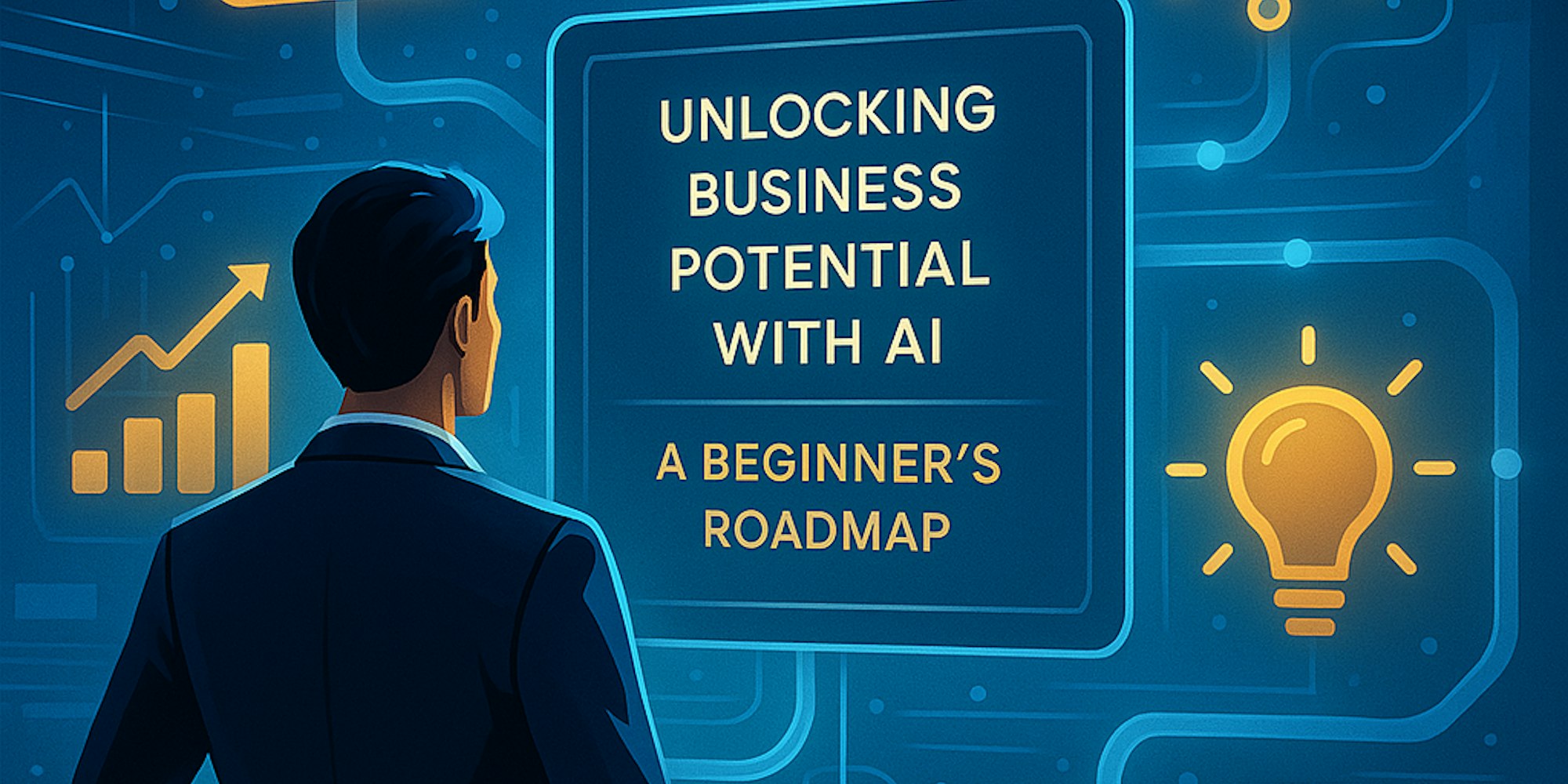Artificial Intelligence
15 min read
A Comprehensive Roadmap for Implementing AI in Business: A Technical Guide
The integration of Artificial Intelligence (AI) in business operations has become a strategic imperative, driven by the need for enhanced efficiency, innovation, and competitiveness. This technical guide provides a structured approach for businesses to navigate their AI implementation journey, focusing on practical steps, value creation, and technical accuracy. AI is no longer a luxury, but a requirement for businesses to stay ahead in the market. According to a recent study, 75% of enterprises will shift from piloting to operationalizing AI by 2024, underscoring the importance of understanding AI fundamentals.
Understanding the Foundation
Establishing a solid foundation is crucial for successful AI implementation. AI is a powerful tool that, when implemented strategically, can drive business value, improve operational efficiency, and create sustainable competitive advantages. A recent McKinsey study highlights that companies with robust data infrastructure are 2.5 times more likely to successfully implement AI solutions. A well-planned AI strategy can help businesses achieve significant returns on investment. To establish a solid foundation, businesses must first understand the technical aspects of AI and its applications in their industry, including identifying areas where AI can add value, assessing current technological infrastructure, and evaluating data quality and quantity.
Stage 1: Exploration and Assessment
The initial phase involves a thorough technical evaluation of an organization's readiness for AI adoption. This stage is critical in determining the success of AI implementation. Businesses must conduct a comprehensive audit of current operations, identify specific pain points and inefficiencies, and map potential areas where AI could add value. Key aspects to consider during this stage include:
- Business Context Analysis: Conduct a thorough analysis of an organization's current operations, including identifying areas for improvement, assessing current technological infrastructure, and evaluating data quality and quantity.
- Data Readiness Assessment: Evaluate an organization's data ecosystem, including data quality and quantity evaluation, current collection methods assessment, storage and management systems review, and privacy and security protocol examination.
A well-planned exploration and assessment stage can help businesses identify potential roadblocks, determine the required resources, and establish a realistic timeline for implementation.
Stage 2: Strategic Planning
Developing a clear implementation strategy is crucial for success. Businesses must define specific, measurable AI implementation goals, align AI initiatives with broader business objectives, and establish KPIs for measuring success. Key aspects to consider during this stage include:
- Setting Clear Objectives: Define specific, measurable AI implementation goals, including identifying key performance indicators, establishing realistic timelines, and allocating necessary resources.
- Use Case Prioritization: Identify and prioritize AI applications based on potential business impact, implementation complexity, resource requirements, and risk assessment.
According to Deloitte, organizations that prioritize high-impact, low-complexity use cases achieve 50% higher success rates in AI implementation. A well-planned strategic planning stage can help businesses establish a clear direction, allocate resources effectively, and ensure successful AI implementation.
Stage 3: Implementation Phase
The execution stage focuses on turning plans into actionable results. Businesses must start small, focus on quick wins, and minimize initial risk. Key aspects to consider during this stage include:
- Starting Small: Begin with pilot projects, including identifying low-risk areas for implementation, allocating necessary resources, and establishing a timeline for completion.
- Technical Infrastructure Development: Select appropriate AI tools and platforms, including establishing necessary hardware/software infrastructure, ensuring seamless integration with existing systems, and implementing robust security measures.
- Team Development: Conduct comprehensive training programs, including hiring specialized talent when needed, creating cross-functional teams, and establishing partnerships with AI experts.
A well-planned implementation phase can help businesses achieve quick wins, build momentum, and establish a strong foundation for future growth.
Stage 4: Scaling and Optimization
Once pilot projects prove successful, focus on expansion. Businesses must document best practices, standardize processes, and ensure infrastructure scalability. Key aspects to consider during this stage include:
- Scaling Strategy: Document best practices, including identifying areas for improvement, establishing a timeline for expansion, and allocating necessary resources.
- Continuous Improvement: Regular performance monitoring, including collecting stakeholder feedback, iterative improvements, and regular system updates.
A well-planned scaling and optimization stage can help businesses achieve significant returns on investment, establish a strong competitive advantage, and ensure long-term success.
Stage 5: Value Realization and Future Planning
Measuring success and planning for future developments is critical. Businesses must track quantitative metrics, evaluate qualitative improvements, and analyze business impact. Key aspects to consider during this stage include:
- Impact Assessment: Track quantitative metrics, including identifying key performance indicators, establishing a timeline for evaluation, and allocating necessary resources.
- Future-Proofing: Monitor AI trends and innovations, including maintaining system flexibility, planning for technology upgrades, and investing in continuous learning.
A well-planned value realization and future planning stage can help businesses achieve long-term success, establish a strong competitive advantage, and ensure continuous growth and improvement.
Conclusion
The AI implementation journey is continuous and evolving. According to IDC, global AI spending is expected to reach $154 billion by 2023, indicating the growing importance of AI in business operations. Businesses must commit to a long-term perspective, remain flexible, and focus on continuous improvement and adaptation. By following this structured approach and maintaining focus on business objectives, organizations can build a strong foundation for sustainable AI adoption and realize significant value from their AI initiatives. Take the first step towards AI implementation today and discover the benefits of AI for your business.
Reference Links:
https://www.amazon.com/Artificial-Intelligence-Business-Roadmap-Getting/dp/1119651735
https://www.gartner.com/en/articles/ai-roadmap
https://medium.com/@stahl950/ai-business-roadmap-a-strategic-necessity-214fb543f497
Get the latest updates
We only send updates that we think are worth reading.



